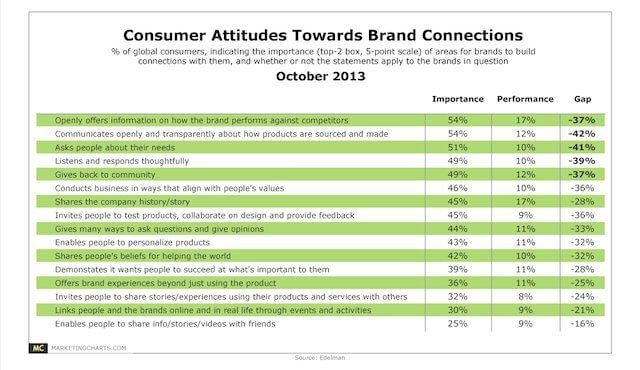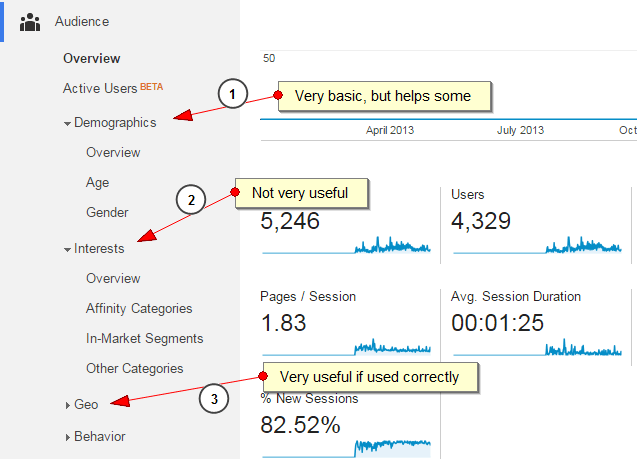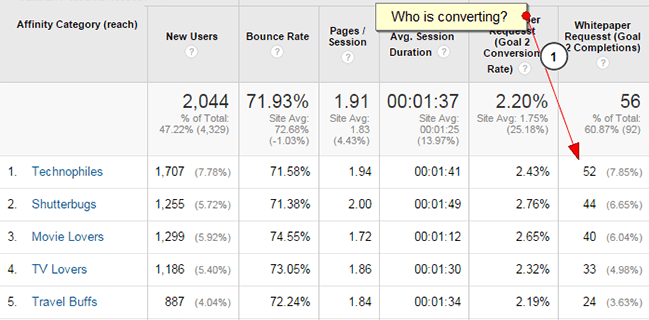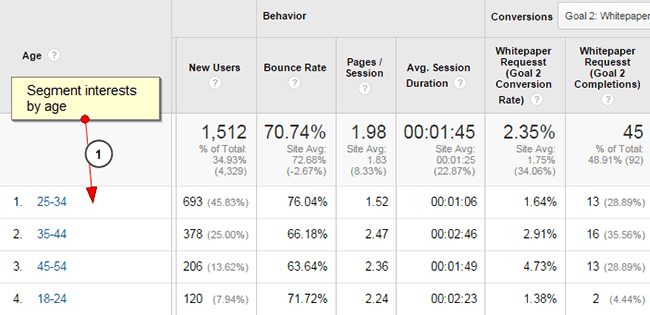
Do you know your customers like the back of your hand? If your answer is no, then you’re making the same mistake countless businesses make when trying to increase their ROI.
Why Should We Develop Digital Personas?
Customers are the thriving source of every business, so it only makes sense that companies pay close attention to their customer base. Knowing your target audience for your content or products is important for increasing conversions and ROI. Unfortunately, a lot of businesses are ignoring this fact and are suffering because of it. In a study that was conducted by Edelman Group, 11,000 people were surveyed from 8 different countries who had recently engaged with a brand, such as following a brand on Twitter or Facebook. Out of the 11,000 people, a little over half (51 percent) felt that brands were underperforming when it came to inquiring about their needs. A measly 10 percent of the respondents believed that brands were doing well.
There’s a remarkable gap between the expectations of consumers and companies meeting them. Another study that was conducted by Responsys, which surveyed 2,000 American adults about their relationships with brands, showed that 34 percent of them had broken up with a brand because the marketing messages they received were disruptive, poor or downright irrelevant.
A similar study was conducted by Thunderhead.com, again inquired among 2,000 consumers in America. A quarter of those surveyed said that they would switch to another provider if they had just one bad experience. Then 1/5 of the respondents declared that regaining trust from a company that gave them a bad experience would be pretty much impossible.
This data obviously shows that consumers don’t find business’s interactions with some companies to be up to par with their expectations. Oddly enough, only six percent of the 700 executives who were surveyed stated that they understood their customer’s needs extremely well and almost half (45 percent) admitted to having limited to no understanding of how their customers engage with them in the digital world.
Simply put, when your customers feel unwarranted, then your business is likely to lose their trust and their business.
Five Steps to Create Customer Personas Using Data
Now that you understand the importance of knowing your customer, one great way to learn about and understand them is to create personas for them using aggregated data. If you are actively using Web analytics on a daily basis, you can use this information to perform these easy five steps:
- Collect Data: You’re going to need at least one month worth of data from your Web analytics, but the more the better. If you’re using Google Analytics, you can set up two profiles, one for returning visitors and one for new visitors. You can then build personas based on these two segments.
- Know How Many Personas Are Needed: It’s common for business’s to use at least three personas, but no more than eight. Based on the Google Analytics reports, you should be able to attribute characteristics to the personas based on the data. If you figure that four personas are needed, then all four will be given the characteristics of 25 percent of the visitors in each report. This is just a rule of thumb, so the proportions don’t necessarily have to be equally proportioned.
- Gather the Reports: Whether or not you created two profiles for new and returning visitors, you will need to gather the following reports: keywords, visitors overview, browsers and OS, map overlay, and referring sites. These reports will provide you with enough insight to know about the age, location, device used and how they found your site (organic or referral). This same data can also be used to help you better focus your site and content to cater to this audience and even help new visitors find your site.
- Fill in the Blanks: It’s time to make templates for each of the personas you have decided to make. First, determine if the persona is a new or returning visitor, then using the two profiles you have created on Google Analytics, you can fill in the characteristics of each persona based on the data. This will include geographic location, age, sex, OS, browser, etc. To ensure that you haven’t over-represented a user characteristic, you should look at the unfiltered “all visitors” profile. You should only include characteristics that make sense with the goals your business has.
- Bring the Personas to Life: A lot of businesses make fictitious biographies that consist of a photo that represents that particular segment. Creativity is key here, so get your juices flowing. For instance, you can determine the makes and models of devices that are being used based on the OS and browsers in the data. Level of comfort with using your site can be determined by whether the persona is a new or returning visitor. Geographic information can be used to determine hobbies, occupations, goals and challenges.
Using Google Analytics To Help Create Digital Personas
Just out of the box, Google Analytics has some basic information to help you create personas, but its not the most useful without setting up custom reports.
The Demographic and Interest information that Google collects is based on knowing this user activity that they track across other websites. Its not entirely accurate, but will give you trends. From one site to the next, I’ve found Interests usually to be the same whether it is B2B, B2C or ecommerce, at least for US visitors.
Knowing the age and gender of your audience can be useful, but only if you have Goals setup and track conversions based on this information AND you have enough traffic to make it meaningful. When you have that setup, you can begin to see what audience segments are meeting your goals and make adjustments to improve any given category.
Now you can segment these groups by age to get more details.
You can do this same thing with geographic information down to the city level. If you take this information and create some custom reports with what people are reading on the website, you’ll gain greater insights into the demographical information that different personas want to read. You can then create content targeted at specific audiences such as influencers, buyers or simply general visits. There is a lot you can dig into with GA, but it does take some time.
If you have a small site with very few visitors, creating personas will not be statistically accurate, but it will give you guidelines on content to create.
Building Personas Can Help Your Business Improve Customer Engagement
With the use of personas, you can gear your blog posts, content and content marketing campaigns around them. Without knowing this, you are just guessing at what visitors want. By creating personas, this increases your chances of getting positive engagement from your customers, which boosts CTR, conversion rates, and potentially your ROI.






One Comment